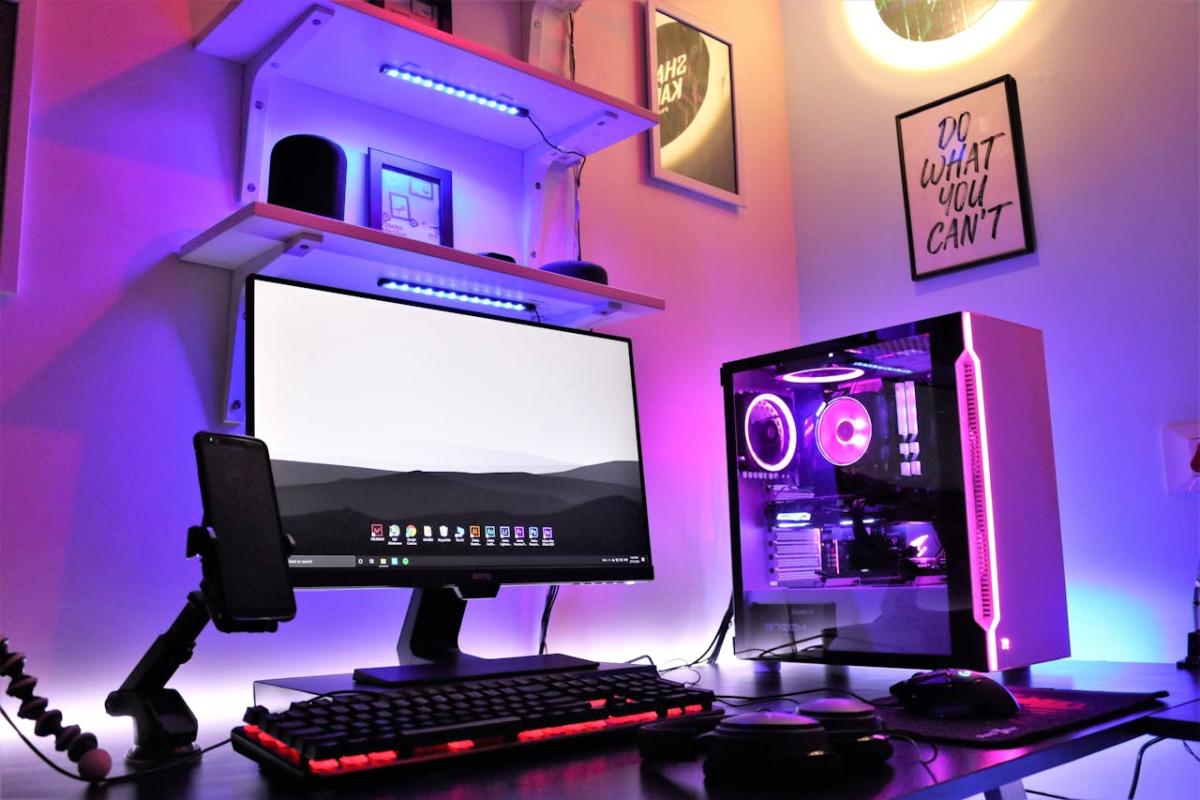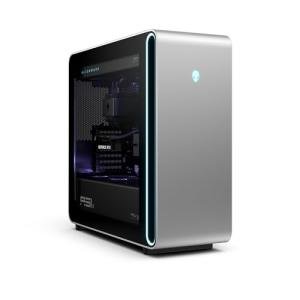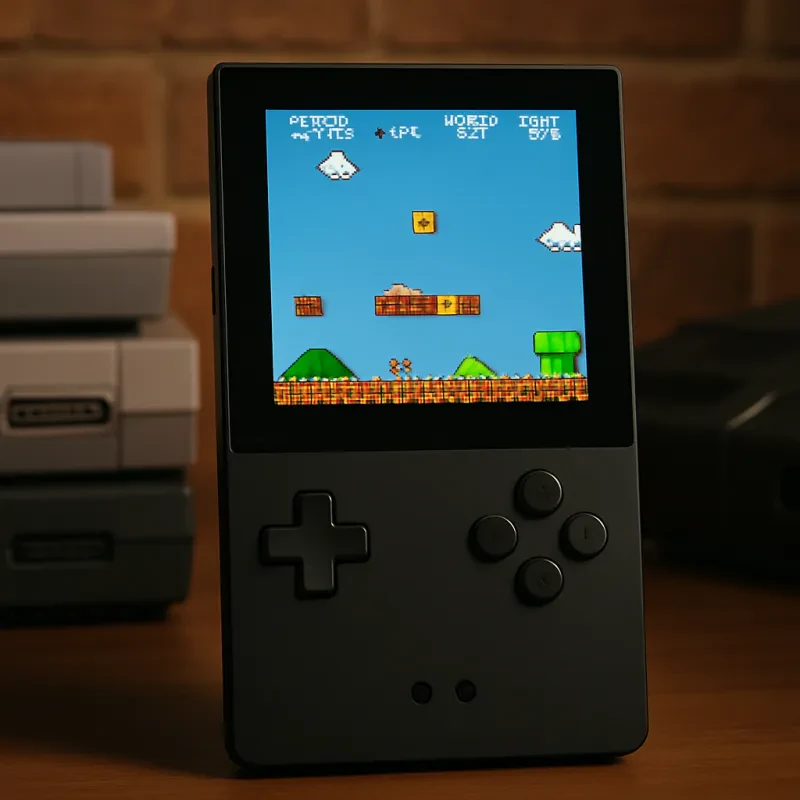Getting into gaming is exciting, but it can also be a little overwhelming, especially when it comes to choosing the right gaming desktop. With so many options available, how do you know which one will give you the best performance without breaking the bank?
If you're a beginner looking to step into the world of gaming PCs, don’t worry! In this article, we’ll break down the key factors to consider when selecting a video gaming desktop, explain the components that matter most, and guide you through finding the right balance of price, performance, and longevity.
1. Understand What You Need from Your Gaming Desktop
Before you start shopping, it's important to figure out what kind of games you want to play and what kind of performance you expect. For beginners, the right desktop might vary based on:
-
Casual vs. Competitive Gaming: Are you playing games like Minecraft and The Sims or more graphically demanding games like Call of Duty or Cyberpunk 2077?
-
Graphics Quality: Do you want to play at 1080p, 1440p, or 4K resolution?
-
Frame Rate Preferences: Are you looking to play games smoothly at 30 FPS (frames per second) or do you want to aim for 60 FPS or higher for a more responsive experience?
-
Future-Proofing: Do you want a machine that can handle new titles and updates for a few years to come?
2. Key Components to Look for in a Gaming Desktop
The performance of your gaming desktop is determined by several key components. Here’s a quick rundown of the most important parts to focus on:
a. CPU (Central Processing Unit)
The CPU is the brain of your computer. It handles most of the general tasks and calculations. For gaming, it’s important to have a fast processor that can handle game logic, AI, and general performance without bottlenecking the system.
-
For Beginners: Aim for at least an Intel Core i5 or AMD Ryzen 5 processor. These mid-range chips provide excellent performance for gaming without costing too much.
-
For More Advanced Gaming: If you're planning to play AAA games or stream while gaming, consider upgrading to an Intel Core i7 or AMD Ryzen 7 for improved multi-tasking and speed.
b. GPU (Graphics Processing Unit)
The GPU, or graphics card, is arguably the most important part of any gaming desktop. It determines how well your games will look and run. The higher the performance of the GPU, the better the graphical quality and smoothness of your gaming experience.
-
For Beginners: Look for something like the NVIDIA GTX 1660 or AMD Radeon RX 570. These cards are budget-friendly but can still run most games at 1080p with good frame rates.
-
For Mid-Range Gaming: Consider the NVIDIA RTX 3060 or AMD Radeon RX 6600 XT for better performance in newer, more demanding games.
-
For High-End Gaming: If you're aiming for 4K gaming or extremely high frame rates, go for a NVIDIA RTX 3070 or AMD Radeon RX 6800 or higher.
c. RAM (Random Access Memory)
RAM is used to store temporary data that your CPU needs for running tasks. More RAM allows your system to run more programs simultaneously, which is important for gaming and multitasking.
-
For Beginners: Aim for 8GB of RAM. This is enough for most gaming experiences today.
-
For Serious Gamers: If you plan to play high-end titles or run multiple applications (like streaming), 16GB of RAM will be much better for smooth performance.
d. Storage (SSD vs. HDD)
Storage is where all your files, games, and applications are saved. When it comes to gaming, solid-state drives (SSDs) are a huge upgrade over traditional hard drives (HDDs), offering faster load times and better overall system responsiveness.
-
For Beginners: A gaming desktop with at least 512GB of SSD storage will allow you to store several games while offering faster boot times and load times.
-
For More Storage: If you’re planning to install many large games, look for a machine with 1TB of SSD or a combination of SSD and HDD (e.g., 512GB SSD + 1TB HDD).
e. Cooling and Airflow
Gaming can generate a lot of heat, especially when playing demanding titles. Good cooling ensures your desktop runs at optimal temperatures, preventing thermal throttling and maintaining performance.
-
For Beginners: Most desktops come with adequate cooling for casual gaming, but make sure your chosen machine has at least one or two fans or an adequate air cooling system.
-
For Future-Proofing: Look for desktops with liquid cooling systems or additional fans if you plan to upgrade to more powerful components in the future.
f. Power Supply Unit (PSU)
A good PSU ensures that your gaming desktop has enough power to run all its components. It’s important to choose a PSU that’s both reliable and has enough wattage to power your components.
-
For Beginners: A 500W to 650W PSU is typically sufficient for entry-level systems.
-
For High-End Systems: If you’re opting for a high-end GPU and CPU, a 700W or higher PSU will be necessary.
g. Monitor, Peripherals, and Extras
While not strictly part of the desktop machine itself, it’s worth considering the peripherals you’ll need to create the best gaming experience:
-
Monitor: Look for a monitor with at least 1080p resolution and a refresh rate of 60Hz or 144Hz for smoother gameplay.
-
Keyboard and Mouse: Gaming-specific peripherals like mechanical keyboards and responsive mice with extra buttons can improve your gaming experience.
-
Headset: Good sound is crucial for immersive gameplay, so investing in a good gaming headset is worth considering.
3. Choosing the Right Desktop for Your Budget
When you’re just starting out, it’s important to pick a desktop that gives you the most value for your budget. Here’s a general guide to what you might expect at different price points:
-
Budget (£500 - £700): At this price range, you can get a solid entry-level gaming desktop with a mid-tier CPU (Intel Core i5 or AMD Ryzen 5) and a GPU like the NVIDIA GTX 1660 or AMD RX 570. You’ll likely be limited to 1080p gaming at medium settings.
-
Mid-Range (£700 - £1,200): This range offers better CPUs (Intel Core i7 or AMD Ryzen 7) and more powerful GPUs (e.g., NVIDIA RTX 3060 or AMD Radeon RX 6600 XT). Expect to play most modern games smoothly at 1080p and even 1440p with high settings.
-
High-End (£1,200+): If you want to run games at 4K or higher frame rates, this range is for you. Look for systems with Intel Core i9 or AMD Ryzen 9 processors, paired with NVIDIA RTX 3070 or better GPUs. These systems are ready for any game and future-proof for years.
4. Prebuilt vs. Custom-Built Desktops
As a beginner, you might be tempted to go for a prebuilt gaming desktop, and that's totally fine. Prebuilt systems are convenient, come with a warranty, and are ready to go out of the box. However, they might come with some markups.
If you're willing to learn, custom-building your PC can save you money, give you more control over your components, and even offer better performance for the price. But if you’re not comfortable with assembly and troubleshooting, starting with a prebuilt system might be the better choice.
Conclusion: Find the Right Balance for You
Choosing the right video gaming desktop is all about finding the balance between your budget, gaming preferences, and future needs. By understanding the key components (CPU, GPU, RAM, storage, cooling) and considering your budget, you can make a more informed decision that will set you up for gaming success. Whether you go for a prebuilt system or decide to customize your own, make sure the machine meets your current and future gaming goals.
Good luck, and happy gaming!
Alienware Area-51 Gaming Desktop – Intel Core Ultra 9 Series 2, Nvidia GeForce RTX 5080, 32GB RAM, 2TB SSD, Liquid-Cooled CPU, Windows 11 Home, AlienFX – Lunar Silver
Product information
$5,239.70
Product Review Score
4.53 out of 5 stars
198 reviews



